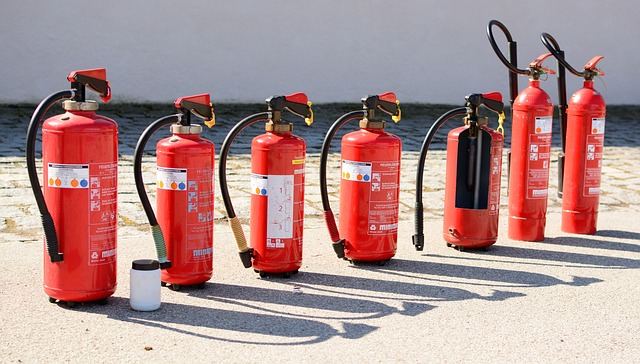Fire extinguishers are an essential safety tool for protecting people and property from fires. However, once a fire extinguisher has reached the end of its useful life, it is important to dispose of it properly to avoid potential hazards and environmental damage. In this comprehensive guide, we will provide you with everything you need to know about how to properly dispose of fire extinguishers.
Understanding Fire Extinguishers
Before discussing how to dispose of fire extinguishers, it is important to understand the different types of fire extinguishers, how they work, and how to handle and maintain them properly.
Types of Fire Extinguishers
There are five main types of fire extinguishers:
- Class A: for fires involving ordinary combustibles such as wood, paper, and cloth.
- Class B: for fires involving flammable liquids such as gasoline, oil, and grease.
- Class C: for fires involving electrical equipment such as appliances, wiring, and circuit breakers.
- Class D: for fires involving combustible metals such as magnesium, titanium, and sodium.
- Class K: for fires involving cooking oils and fats commonly found in commercial kitchens.
How Fire Extinguishers Work
Fire extinguishers work by removing one or more elements of the fire triangle: heat, fuel, and oxygen. They contain a compressed gas that, when released, expels a powder, foam, or liquid agent onto the fire, smothering it and stopping the chemical reaction.
Proper Handling and Maintenance of Fire Extinguishers
To ensure the safety and effectiveness of your fire extinguishers, it is important to handle and maintain them properly. Some key tips include:
- Regularly inspecting your fire extinguishers for signs of damage or expiration.
- Following the manufacturer’s instructions for use and maintenance.
- Properly storing your fire extinguishers in easily accessible locations.
- Properly mounting your fire extinguishers with the correct brackets and straps.
Why Proper Disposal is Important
Improper disposal of fire extinguishers can lead to environmental damage and potential safety hazards. Here are some of the reasons why proper disposal is important:
Environmental Impact of Improper Disposal
Fire extinguishers contain chemicals that can harm the environment if not disposed of properly. For example, some types of fire extinguishers contain halon, a potent greenhouse gas that depletes the ozone layer. Disposing of fire extinguishers improperly can release these chemicals into the environment, causing harm to the ecosystem.
Safety Hazards of Expired or Damaged Fire Extinguishers
Expired or damaged fire extinguishers can pose a safety hazard. An expired fire extinguisher may not function properly in an emergency, and a damaged fire extinguisher may leak or release chemicals unexpectedly, causing harm to people or property.
Legal Implications of Improper Disposal
Improper disposal of fire extinguishers can also result in legal implications. Many states have laws regulating the disposal of hazardous materials, including fire extinguishers. Failing to follow these laws can result in fines or other legal penalties.
How to Dispose of Fire Extinguishers
Now that we have discussed why proper disposal is important, let’s talk about how to dispose of fire extinguishers properly.
Step 1: Check the Expiration Date
The first step in disposing of a fire extinguisher is to check the expiration date. Fire extinguishers typically have a date stamp that indicates when they were manufactured and when they expire. If your fire extinguisher has expired, it is important to dispose of it properly.
Step 2: Contact Your Local Fire Department or Hazardous Waste Facility
The next step in disposing of a fire extinguisher is to contact your local fire department or hazardous waste facility. They can provide you with information on how to properly dispose of your fire extinguisher based on your location and the type of fire extinguisher.
Step 3: Follow the Proper Disposal Method
The proper disposal method for fire extinguishers may vary depending on the type of extinguisher and your location. Here are some common disposal methods:
- Recycling: Some types of fire extinguishers can be recycled. Check with your local recycling facility to see if they accept fire extinguishers.
- Hazardous waste disposal: Some fire extinguishers may be considered hazardous waste and require special disposal. Contact your local hazardous waste facility for more information.
- Discharging and disposing: Some fire extinguishers can be discharged and disposed of in the trash. However, it is important to follow the manufacturer’s instructions for discharge and disposal to avoid potential hazards.
Step 4: Properly Label and Transport the Fire Extinguisher
When transporting a fire extinguisher for disposal, it is important to properly label it and transport it safely to avoid any potential hazards. Here are some tips:
- Label the fire extinguisher as “empty” or “discharged.”
- Secure the fire extinguisher in a box or container to prevent it from rolling or tipping over during transportation.
- Transport the fire extinguisher in a well-ventilated vehicle to avoid any potential leaks.
Conclusion
Properly disposing of fire extinguishers is an important part of fire safety and environmental responsibility. By understanding the different types of fire extinguishers, how they work, and how to handle and maintain them properly, you can ensure their safe and effective use.
Remember to always check the expiration date, contact your local fire department or hazardous waste facility, follow the proper disposal method, and label and transport the fire extinguisher safely.

